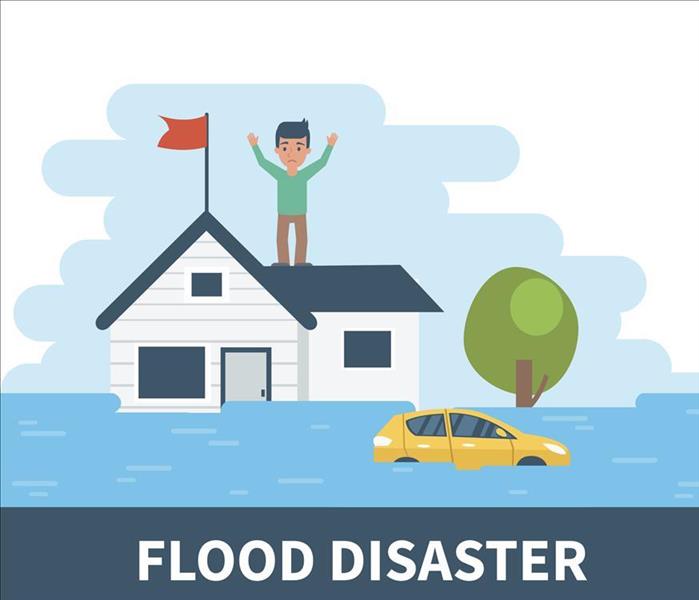What Kinds of Structural Hazards Pose Risks During Flood Damage Recovery Efforts?
10/10/2020 (Permalink)
 Don't despair when your home is flooded and you feel stranded! Call SERVPRO for floodwater extraction, drying, and full restoration.
Don't despair when your home is flooded and you feel stranded! Call SERVPRO for floodwater extraction, drying, and full restoration.
Flood Damage Restoration Challenges Include More than Water Removal, Containment, and Disposal -- SERVPRO Protects Oyster Bay Residents from Compromised Structural Components
Contaminants in the water are an issue for all flooding scenarios in Oyster Bay, requiring storing in tanks for appropriate, regulated disposal off-site the extracted water that cannot be safely directed to a treated sewer line. Other hazards beyond the tainted category of the water also can complicate storm damage recovery. Reputable flood restoration firms assess and control these hazards to keep occupants and workers safe and prevent further damage to structural components.
Where Are Examples of Structural Hazards Due to Flooding Commonly Found?
When water invades an Oyster Bay home, flood damage restoration needs pop up all through the structure. Water from rainstorm-related overland flooding spreads across pavement, dirt, and lawns before pushing into lower levels. Storm surge adds to the mix pouring into homes from ground level. Do not forget about the rain pounding on roofs and entering through broken windows, doors, and siding damaged by wind-driven debris and toppled trees. You can see the water from all these sources inside your home. Ominously, vast quantities of storm and flood water can also hide, creating conditions that can deteriorate into catastrophe fast if not discerned and managed.
Rainwater from roof, window, and siding breaches, as well as overland flooding, can fill cavities
- Between walls
- Behind built-in cabinets, beadboard, wainscoting, and paneling
- Above ceilings
- Beneath floors
- Inside cinder block cells
How Do Flood Damage Restorers Control the Hazards?
The collected water is heavy, and the pressure it brings to bear can cause the collapse of structures. Waiting for drainage to occur on its own is not an option because of the risk of physical injury, substantial damage to building materials, and secondary harm like mold. SERVPRO crews determine where the water hides through testing with sensitive water and moisture detection and measuring devices. Then we use strategies to release the water as an initial step in flood water restoration:
- Punching weep holes in ceilings, beginning with wall edges into the center to avoid a cascade of water
- Drilling or cutting release holes at the bottom of walls (after prying off baseboards, paneling, beadboard, and wainscoting)
- Pulling off toe kicks to release water from under bookcases, buffets, kitchen cabinets, and bathroom vanities
- Drilling holes in mortar joints of brickwork and cinder block construction
- Sawing walls stud to stud several inches above the water line
The well-trained and experienced flood damage restoration crews at SERVPRO of Oyster Bay skip no steps when delivering outstanding outcomes. Call us at (516) 464-3300 to schedule a flooding recovery assessment.






 24/7 Emergency Service
24/7 Emergency Service